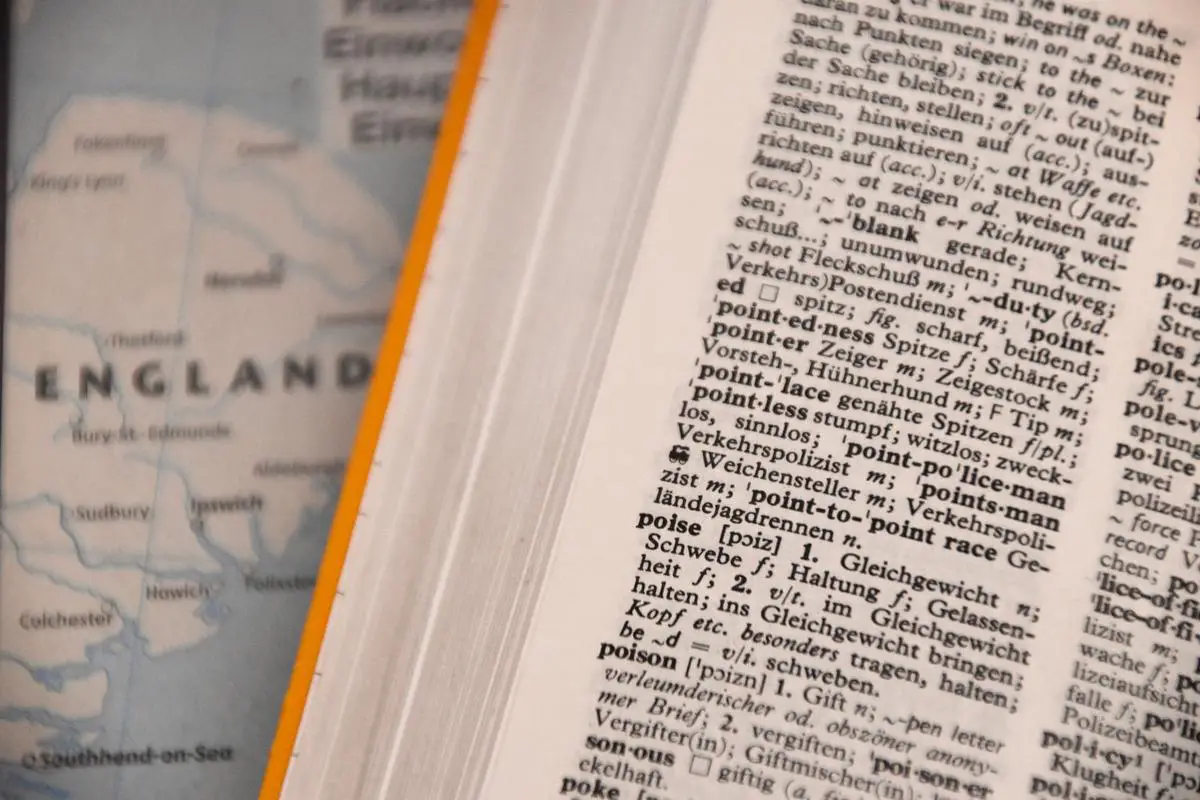Understanding Differences: British English Vs. American English
British English Vs. American English
English, as one of the most widely spoken languages of the world, evolves and manifests in diverse forms. Notably, British English and American English exhibit striking differences that echo the geographical, historical, and social aspects of the regions from which they originate. This exploration strives to delve into the nuances that demarcate British and American English, primarily pertaining to spelling variations, differences in vocabulary and meaning, pronunciation disparities, and grammatical deviations. These studies serve not just to satisfy linguistic curiosity, but to provide a firm basis for educators and teachers to enhance their language teaching practices, in turn fostering a more enriched and nuanced learning experience for students.
Historical Development
Origins of British and American English
The divergence of British and American English traces back to the early 17th century when the first English settlers began making homes in what is now the United States. These English speakers brought with them the “Elizabethan English” typical of the time, which then evolved based on their regional and socio-political environments and interactions with various immigrant groups.
Differences in Vocabulary and Spelling
The key differences between British and American English lie in spelling, pronunciation, and vocabulary. Early American English began adopting words from Native American languages, as well as from other European colonizers, marking its deviation from British English. Spelling differences were solidified when Noah Webster, in his 1828 “American Dictionary of the English Language,” simplified and Americanized several British spellings.
Pronunciation and Accent Variations
Pronunciation and accent discrepancies, such as “rhotic” and “non-rhotic” pronunciations, also set these two English forms apart. American English generally speaks with a rhotic accent, pronouncing the “r” at the end of words, while many dialects of British English are non-rhotic, dropping or softening the ending “r”.
Influence of Geography and Social Factors
On both sides of the Atlantic, geography and social factors have played significant roles in the development of English. In America, regional dialects have developed based on settlement patterns and influence of other languages, for example, the Southern drawl or New York’s distinct accent. Similarly, in Britain, factors such as social class and regional identity have given rise to numerous dialects such as Cockney or Geordie.
Impacts on English Language Teaching and Learning
These variations in English impact teaching and learning globally. When teaching English as a second language, educators often have to decide which version to use, based on factors such as the location of teaching, resources available, and the students’ future needs. Often, learners are exposed to differences between the two English chemes, enabling them to make informed choices on the path they wish to traverse.
Impact on Global Communication
The dichotomy between British and American English significantly influences global communication. Grasping the nuances between the two versions of English can evade misunderstandings and confusions. Better command over both varieties of English can facilitate smoother communication and nurture stronger bonds between individuals from different regions where English is spoken.

Variations in Spelling
Variation in Spelling: American vs British English
Although the English language is universal, it does veer in distinct ways across regions. American English and British English are a prime example of this varying linguistic landscape. Differences in spelling between the two versions are apparent and can cause bewilderment among those unfamiliar with them.
Take for instance common words such as ‘color’ and ‘organization’, which in British English are spelled as ‘colour’ and ‘organisation’. ‘Defense’ and ‘realize’ become ‘defence’ and ‘realise across the Atlantic, while ‘center’ is spelled as ‘centre’ in British English.
The most frequently occurring spelling contrasts between American and British English involve the letters “u,” “s,” and “z”. For example, in American English, words ending in -our in British English – like favour and colour – are spelled as favor and color respectively. Moreover, words ending in -ise in British English – like realise – use -ize in American English to form realize.
Words such as centre, which end in -re in British English, morph into center in American English. The same adaptation is seen in words like metre (British) transforming into meter (American).
Evolution of Spelling Differences
The differences in spelling between British and American English arose in the late 18th and early 19th century when Noah Webster, an American lexicographer, aimed to simplify and Americanize the English spelling system. Webster removed certain letters and changed the order of others in numerous British words, creating a significant linguistic divergence between American and British spelling.
Webster’s dictionary, first published in 1828, became an authoritative source for American English spelling. This dictionary included many of the simplified spellings that are now standard in American English.
The Continuance of Spelling Differences
Due to factors including tradition, practicality, and dictionary standards, spelling differences persistently exist between British and American English. Over time, each variation has developed its own distinct set of vocabulary, spelling, pronunciation, and grammar rules.
As an educator intending to teach the spelling rules of these variants of English, understanding these distinctions is crucial. An effective approach to teaching spelling would involve comprehending the varied trajectories of these language forms. It is important to realize that neither variant is superior or ‘correct,’ but suitable in their respective contexts.
Moreover, flexibility in adjusting to different forms of English should be instilled in students. Ideally, students will both understand and appreciate the different spelling in American and British English, enabling them to communicate effectively in diverse environments.

Differences in Vocabulary and Meaning
American English vs. British English: Vocabulary and Meaning
Some clear distinctions between American and British English can be found in the vocabulary and the usage of certain words which can lead to misunderstood conversations if not properly known. For instance, the term ‘boot’ in the UK is used to refer to the back storage area of a car, while in the US, it generally denotes a kind of shoe. Another example is that ‘biscuit’ in the UK is a sweet baked treat which in America is known as a ‘cookie’, and inversely, the American ‘biscuit’ is a fluffy bread roll.
There are also words that are present in both American and British English but with different meanings. ‘To table’ a motion in British English means to present it for discussion, but in the US, it implies delaying the discussion. Another example would be ‘chips’- in the UK it refers to what Americans name ‘fries’, whereas in US English, ‘chips’ are what the British call ‘crisps’.
Of interesting note, in British English, a ‘public school’ is a type of private school, often prestigious and costly, while in American English, a ‘public school’ is state-funded and free to attend. A similar divergence occurs with ‘first floor’, where British English refers to what an American would call the ‘second floor’, while their ‘first floor’ is akin to the ‘ground floor’ in the UK.
In addition, there are idiomatic expressions and phrases that differ in usage. The phrase ‘touch wood’ is said in the UK to fend off bad luck, while in America it’s ‘knock on wood’. A ‘drop in the ocean’, downplaying the effect or importance of something in the UK, becomes a ‘drop in the bucket’ in the US.
As idioms are rooted in culture, they often do not translate directly and can lead to confusion. For instance, in the US someone cancelling plans might say they will ‘take a rain check’, an expression derived from baseball that has little usage in the UK.
It is essential for educators to recognize and impart the knowledge of these differences between British and American English to students, not only to avoid potential ambiguities and miscommunication but also to enhance the students’ understanding of cultural context. Doing so equips students with better skills to manage cross-cultural interactions and fosters appreciation for the diversity found within the English language.
British English Vs. American English

Photo by waldemarbrandt67w on Unsplash
Pronunciation and Accents
A Closer Look at Pronunciation and Accents in American and British English
One of the standout differences between the American and British dialects is in their pronunciation and accent. Despite considerable geographic variations, American English accents uphold common pronunciation traits. Inversely, British English celebrates a wide array of local accents, each possessing its unique pronunciation nuances, thereby adding to the vibrant diversity of the language.
The American English accent
The American English accent is characterized by rhotic pronunciation, meaning the ‘r’ at the end of words is pronounced. Vowel sounds often become flattened, and the ‘a’ in words like ‘dance’ or ‘bath’ is pronounced as æ(as in ‘cat’). There’s a tendency towards simplified pronunciation, such as dropping the ‘u’ in words like ‘color’ or ‘favorite,’ and a preference for the -ize ending over -ise.
In contrast, British accents
British accents, notably Received Pronunciation (RP), considered posh or standard British English, include non-rhotics, where ‘r’ at the end of the words is not pronounced. The ‘a’ in ‘dance’ and ‘cast’ shifts towards short ɑ sounds (as in ‘father’), and there’s a general preference for the -ise over the -ize ending.
Regional Variations
American and British English both exhibit wide regional variations in accents. For example, American accents vary significantly from the nasal intonations of the Midwestern states to the distinctive drawl of the Deep South. Similarly, the wide array of British accents includes the clipped Received Pronunciation, broad Yorkshire tones, and the distinct drawl of the West Country.
Impact on Comprehension and Communication
Accents and pronunciation differences between British and American English have profound impacts on comprehension and communication. Misunderstandings can occur, especially when dealing with unfamiliar regional accents. Hence, individuals must understand these differences effectively, contributing to global English communication.
With the increasing worldwide prominence of American media, many Britons recognize and understand American English. Simultaneously, American English speakers may find some British accents challenging due to the richness and diversity of accents across the British Isles. Similarly, variations in pronunciation of individual words can potentially lead to misunderstandings in conversation, written contexts, or when learning the language.
Final Thoughts
To wrap things up, it’s crucial to understand that the distinctions in pronunciation and accents in English play a pivotal role, influencing clarity, interactivity, and language learning opportunities. While constituting the distinctiveness of the language, they concurrently pose trials that need strategic and proficient handling for promoting effective communication. Regular exposure and consistent practice are generally the go-to methods of mastering these linguistic subtleties, be it for an informal chit-chat or in a professional setting.
British English Vs. American English

Grammatical Differences
Structural Differences in American and British English
One striking contrast between American and British English surfaces in their differing sentence structures. In American English, collective nouns (a single term that encapsulates a group of people or things, like ‘team’ or ‘group’) are normally perceived as singular. For instance, an American would rather say, “The team is winning.” Contrarily, British English tends to refer to collective nouns in the plural form, saying, “The team are winning”.
Verb Tenses: Present Perfect
Another distinction appears in the use of the present perfect tense. American English may employ the past simple tense where British English would use the present perfect. For instance, while a British speaker might say, “I’ve lost my keys. Can you help me look for them?”, an American English speaker may say, “I lost my keys. Can you help me look for them?”. This is not to suggest that the present perfect is never used in American English, but rather that its use is less frequent.
Spelling Variations
Although not strictly a grammatical difference, variations in spelling between British and American English can drastically affect comprehension in written language. For example, spelling conventions for words ending in “-our” in British English (e.g., ‘colour’, ‘favour’) become “-or” in American English (‘color’, ‘favor’). Similarly, words ending in “-ise” in British English usually end in ‘-ize’ in American English (“realise” becomes “realize”).
Usage of Past Simple vs. Past Participles
The difference emerges again in the use of past simple and past participle verb forms. In British English, it’s common to use the irregular past participle forms. For instance, British speakers say “I have gotten” while American speakers say “I have got”. The same rule applies to “burnt” and “burned”, “dreamt” and “dreamed”, and so on.
Pronouns with Collective Quantifiers
American English often uses “that” after collective quantifiers like “all”, “some”, and “none”. Brits, conversely, would more often use “of which”. For example, an American would likely say “None of them that arrived late were allowed in” while a Brit would say, “None of them, of which arrived late, were allowed in.”
Prepositions
Lastly, minor yet significant differences exist in the use of prepositions. For example, British English uses “at” while American English uses “on” when referring to the weekend. Therefore, in American English, one would say “I am working on the weekend”, whereas in British English it would be “I am working at the weekend.”
An understanding of these grammatical differences between British and American English is crucial for those intending to teach students versed in one variety but transitioning to the other. As the differences are quite nuanced rather than explicitly stark, students can benefit from exercises and lessons specifically tailored towards engendering this understanding.
British English Vs. American English

So, as we traverse the path of understanding and exploring linguistic diversity, one cannot ignore the importance of being cognizant of the distinguishing features of British and American English. Drawing attention to these in a pedagogical context can significantly elevate the student’s experience of language learning. From spelling variances to alterations in pronunciation, and the subtle shifts in grammar, each detail impacts communication effectiveness. By delving into these minute but crucial differences, educators can imbue their teaching tactics with a deeper understanding, ensuring their learners are well-equipped to navigate the complexities of English in its different forms. This understanding is fundamental in an increasingly globalized world, where versatile communication skills hold paramount importance.
Writio: Elevate your website’s content with seamless automation! This article was exquisitely crafted by the ingenious Writio.
